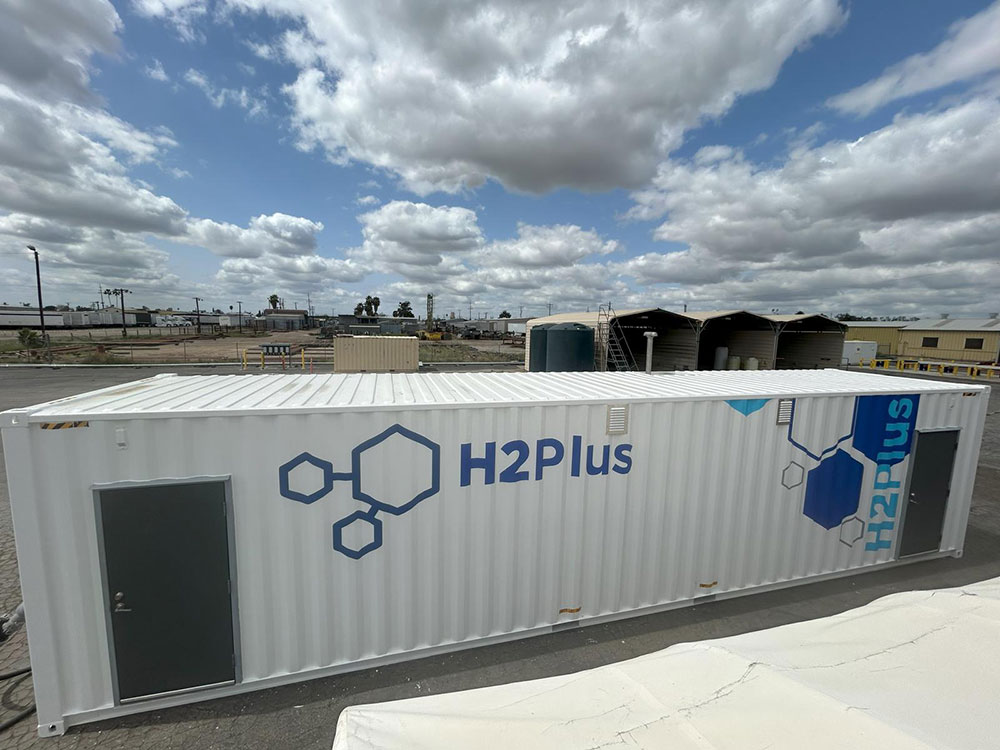Even as states race to restrict per- and polyfluoroalkyl substances (PFAS)—the so-called “forever chemicals”—and consumers flock to PFAS-free products, the truth remains: PFAS is already deeply embedded in our environment.
It’s a challenge that startup H2Plus is aiming to solve. While most existing technologies focus on filtering PFAS out of water and containing it, H2Plus is doing something different: destroying PFAS at the molecular level.
Their system uses gas-phase hydrated electrons to break the notoriously strong carbon-fluorine bonds that make PFAS so persistent. Designed to treat high-contaminant water streams like landfill runoff, fire suppression wastewater, and RO concentrate, the technology has been piloted successfully and is now being looked at as a promising tool in the clean water playbook.
Filtration Isn’t Enough
Traditional approaches to PFAS contamination—such as granular activated carbon, ion exchange, and reverse osmosis—have helped reduce exposure in some communities. But they come with a catch: they don’t eliminate the chemicals. Instead, they concentrate PFAS into a new form: sludge, brine, or spent filter media that must be incinerated or landfilled.
These methods create logistical challenges, regulatory uncertainty, and long-term liabilities for municipalities and utilities. As regulations evolve and PFAS levels are tracked more aggressively, the cost and complexity of relying on filtration alone are becoming unsustainable.
H2Plus offers a departure from this model. Rather than pushing the problem downstream, their process neutralizes PFAS onsite, eliminating the need for secondary disposal and dramatically reducing risk.
Why Destruction Matters—Even If PFAS Are Banned
Even as PFAS bans gain momentum in state legislatures and consumer products are reformulated, it’s important to remember one thing: PFAS don’t disappear just because they’re banned.
The chemicals are already present in drinking water, private wells, agricultural runoff, and landfill leachate. Some estimates suggest PFAS contamination affects the drinking water of over 140 million Americans. Without a method for destruction, those contaminants will persist in the environment—and in our bodies—for generations.
Destruction-based technologies like that of H2Plus aren’t just relevant in the future; they’re essential right now, for communities dealing with legacy contamination, firefighting foam exposure, or unlined landfill sites.

Breaking the Forever Bond: Why PFAS Destruction Is the Next Frontier in Clean Water Innovation
Built for Onsite, Scalable Deployment
H2Plus’s solution is engineered to be mobile and modular. Housed in a standard 40-foot container, the system can be deployed rapidly to hotspots—no massive infrastructure upgrades or long permitting cycles required. It’s been designed for flexibility: landfills, rural fire departments, industrial operators, and utilities can all integrate the system without reworking existing operations.
Unlike energy-intensive incineration or pressure-based systems, H2Plus operates at ambient conditions with significantly lower energy input. The system’s low capital expenditure and compact footprint make it well-suited for municipalities and site operators seeking scalable, practical deployment options.
A Technology for a New Era of Water Safety
As recent Supreme Court decisions challenge federal environmental protections and some oversight responsibilities shift to state agencies, the burden of managing PFAS contamination increasingly falls on local leaders. In this regulatory gray area, innovation becomes even more important.
H2Plus is part of a growing cohort of climate-resilient water technology firms looking beyond traditional containment toward true remediation. By developing a cost-effective, scalable method for destroying PFAS, they offer a way forward for communities who can’t afford to wait.
The Bottom Line: Eliminate the Threat at the Source
As communities across the U.S. uncover new PFAS hotspots, from military bases to suburban wells, the conversation is shifting. It’s no longer just about identifying the problem—it’s about finding credible ways to eliminate it.
That’s where destruction technologies like those from H2Plus come into play. With proven performance in challenging environments and a mission rooted in scientific rigor and public health, these technologies will shape how we respond to one of the most persistent environmental threats of our time.






